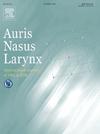Retrospective study about suppression of new sensitization to cedar pollen in children who have undergone sublingual immunotherapy for house dust mites
IF 1.5
4区 医学
Q2 OTORHINOLARYNGOLOGY
引用次数: 0
Abstract
Objective
To investigate whether sublingual immunotherapy (SLIT) with house dust mite (HDM) extract suppresses new sensitization to Japanese cedar pollen(JCP) in children with HDM-positive allergic rhinitis.
Methods
This retrospective study was conducted at our center and included pediatric patients aged 5–15 years who visited between January 2018 and December 2020. Eligible patients tested positive for HDM-specific immunoglobulin E (IgE), negative for JCP-specific IgE, and had no history of SLIT for cedar pollen. 33 patients who continued HDM SLIT for 3 years were assigned to the SLIT group, while 52 patients with allergic rhinitis who did not receive HDM SLIT formed the non-SLIT group. Patients with severe allergic comorbidities or those undergoing immunosuppressive therapy were excluded. The primary endpoints were the rate of new sensitization to Japanese cedar pollen and the cedar-specific IgE levels after 3 years. We used the chi-square test, t-test, Mann–Whitney U test, and logistic regression analysis to compare the groups.
Result
After 3 years, the rate of new sensitization to JCP was 42.4 % in the SLIT group and 51.9 % in the non-SLIT group (p = 0.383). The JCP-specific IgE level was 4.77 UA/mL in the SLIT group and 7.93 UA/mL in the non-SLIT group (p = 0.207).
Conclusion
The SLIT group showed a slightly lower rate of new sensitization and lower JCP-specific IgE levels; however, the differences were not statistically significant. A larger, multi-center study is needed to confirm these findings and adjust for potential confounders.
屋尘螨舌下免疫治疗儿童对雪松花粉新致敏抑制的回顾性研究
目的探讨房尘螨(HDM)提取物舌下免疫治疗(SLIT)是否能抑制房尘螨阳性变应性鼻炎患儿对杉木花粉(JCP)的新致敏。方法本回顾性研究在本中心进行,纳入2018年1月至2020年12月期间就诊的5-15岁儿科患者。符合条件的患者检测hdm特异性免疫球蛋白E (IgE)阳性,jcp特异性IgE阴性,并且没有雪松花粉的SLIT史。持续HDM SLIT 3年的患者33例为SLIT组,未接受HDM SLIT的变应性鼻炎患者52例为非SLIT组。有严重过敏合并症或接受免疫抑制治疗的患者被排除在外。主要终点是3年后对杉木花粉的新敏化率和杉木特异性IgE水平。我们采用卡方检验、t检验、Mann-Whitney U检验和logistic回归分析进行组间比较。结果3年后,SLIT组对JCP的新敏化率为42.4%,非SLIT组为51.9% (p = 0.383)。SLIT组jcp特异性IgE水平为4.77 UA/mL,非SLIT组为7.93 UA/mL (p = 0.207)。结论SLIT组新致敏率略低,jcp特异性IgE水平较低;然而,差异没有统计学意义。需要一个更大的、多中心的研究来证实这些发现,并调整潜在的混杂因素。
本文章由计算机程序翻译,如有差异,请以英文原文为准。
求助全文
约1分钟内获得全文
求助全文
来源期刊

Auris Nasus Larynx
医学-耳鼻喉科学
CiteScore
3.40
自引率
5.90%
发文量
169
审稿时长
30 days
期刊介绍:
The international journal Auris Nasus Larynx provides the opportunity for rapid, carefully reviewed publications concerning the fundamental and clinical aspects of otorhinolaryngology and related fields. This includes otology, neurotology, bronchoesophagology, laryngology, rhinology, allergology, head and neck medicine and oncologic surgery, maxillofacial and plastic surgery, audiology, speech science.
Original papers, short communications and original case reports can be submitted. Reviews on recent developments are invited regularly and Letters to the Editor commenting on papers or any aspect of Auris Nasus Larynx are welcomed.
Founded in 1973 and previously published by the Society for Promotion of International Otorhinolaryngology, the journal is now the official English-language journal of the Oto-Rhino-Laryngological Society of Japan, Inc. The aim of its new international Editorial Board is to make Auris Nasus Larynx an international forum for high quality research and clinical sciences.
 求助内容:
求助内容: 应助结果提醒方式:
应助结果提醒方式:


